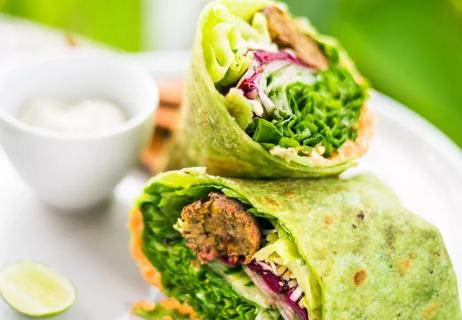Turn to these foods for plant protein

When you think of protein, a big piece of steak or an omelet with bacon might come to mind.
Advertisement
Cleveland Clinic is a non-profit academic medical center. Advertising on our site helps support our mission. We do not endorse non-Cleveland Clinic products or services. Policy
But protein doesn’t just come from animal-based foods. Many plants are high in protein, too.
So if you’re thinking of going vegetarian or vegan — or just scaling back on your meat intake a few days a week – you can still get the nutrients you need. In fact, a diet rich with whole plant foods can get you on the right track to lowering your risk for many chronic illnesses and help you feel better overall.
“On a vegetarian or vegan diet, you can get enough protein if you eat an adequate number of calories from a variety of whole foods,” says registered dietitian Nancy Geib, RD, LDN.
Protein is your body’s main building block. “It’s essential to make muscles and tendons and skin tissues, and it helps your body produce antibodies to fight infections,” Geib says.
Ideally, healthy adults should get about 0.36 grams of protein per pound of their body weight each day. That comes out to 54 grams or so for a 150-pound adult.
But that’s just a starting point. If you’re pregnant or breastfeeding, or if you’re an athlete, you’ll need more. “It depends on many factors including your individual activity level and your muscle mass,” Geib says.
For most people, it’s not necessary to meticulously count or track how much protein you’re eating every day.
Advertisement
“Just make sure you’re eating some with every meal,” Geib says. “A lot of times I’ll see vegetarians and vegans who are eating a lot of pasta or junk food, and they’re not getting in those fruits and vegetables and that well-balanced diet.”
If you feel weak or fatigued regularly, or if you find yourself getting hungry shortly after eating a meal, those could be signs that you’re not getting enough. A registered dietitian can help you make tweaks to your diet to make sure you’re properly fueling your body.
Here’s how different vegan and vegetarian protein sources stack up:
If you’re a vegetarian but not a vegan, you might incorporate these other protein sources into your diet:
Aside from protein, there are some other nutrients you’ll want to make sure you’re getting enough of on a non-meat diet. Talk with your doctor or dietitian to make sure your diet includes adequate amounts of:
It might take some planning and diligence, but be confident that you can get the nutrients your body needs if you prefer a diet without meat.
Advertisement
Learn more about our editorial process.
Advertisement

Giving up meat can have a significant effect on lowering cholesterol

A nutrient-packed diet driven by fruits and veggies can lower certain health risks

It’s possible to drop a few pounds as long as you watch what you eat

What to know about this semi-vegetarian lifestyle

Some diets shun them, but research hasn’t concluded that they’re harmful

With a focus on internal cues for hunger and fullness, this eating style may revolutionize your relationship with food

Designed to lower your blood pressure, this eating plan focuses on heart-healthy foods like whole grains, fruits and vegetables

Leucine is an amino acid that helps you build muscle — it’s found in both plant and animal protein

If you’re feeling short of breath, sleep can be tough — propping yourself up or sleeping on your side may help

If you fear the unknown or find yourself needing reassurance often, you may identify with this attachment style

If you’re looking to boost your gut health, it’s better to get fiber from whole foods